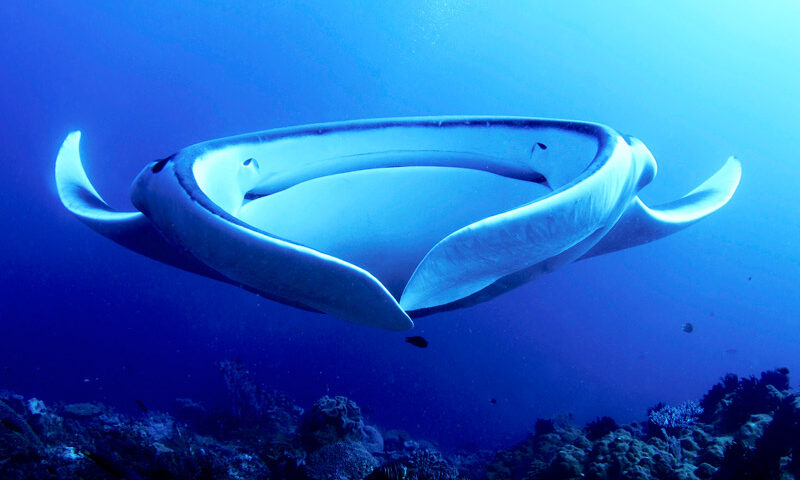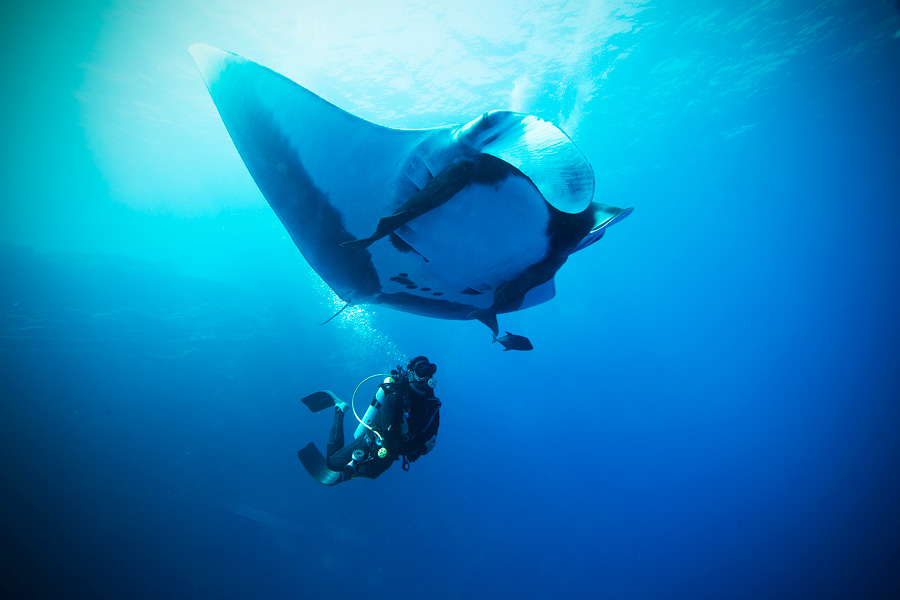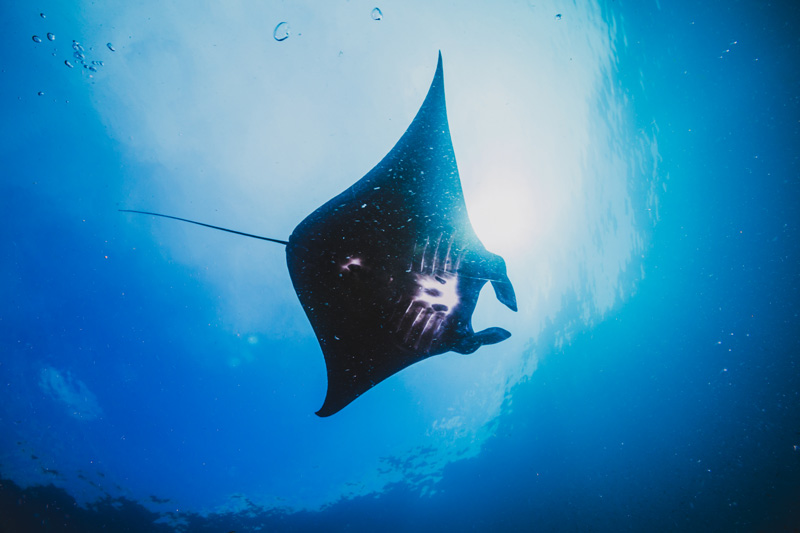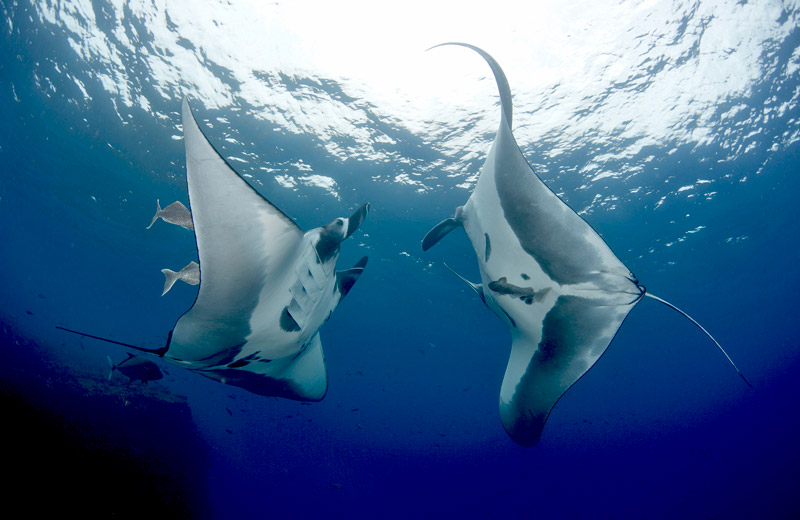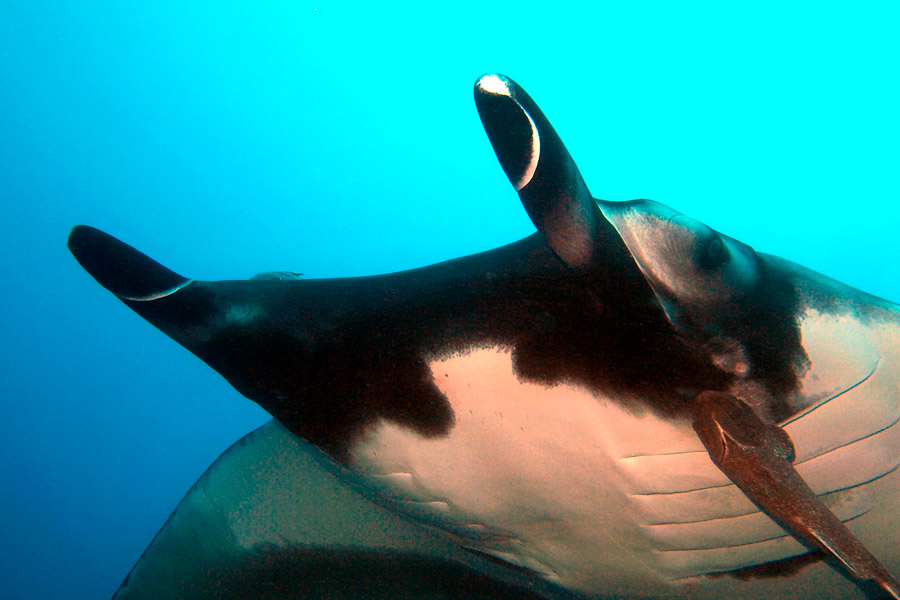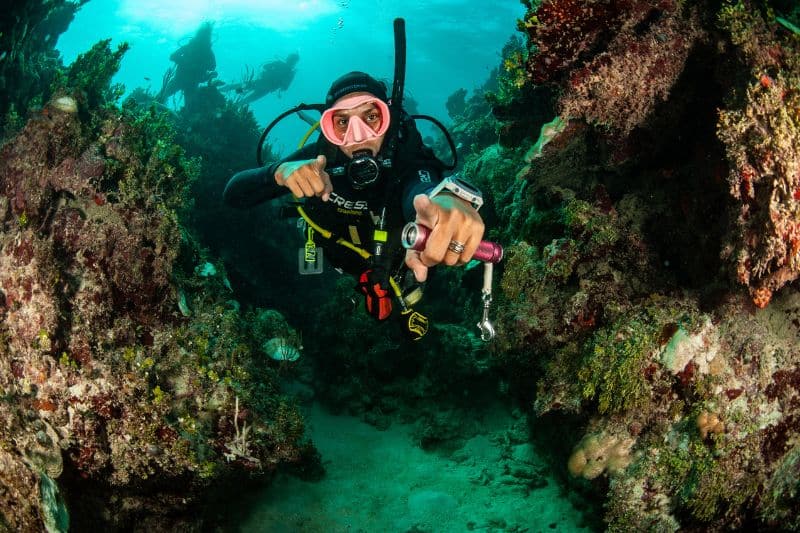If you are interested in knowing manta ray facts, it is because, in one way or another, this animal has left you in awe, just like me.
The first time I had the opportunity to meet one of these breathtaking fish, I witnessed a beautiful spectacle.
There we were on our liveaboard dive cruise in Socorro, looking over the ocean. The sea was calm. Suddenly, what looked like huge pointy black and white ears pierced the surface, like a massive cat had learned how to swim. But no, the manta ray continued its ascent into the air as if it were an arrow. Although enormous it flies elegantly, flapping its wing-like fins through a totally hostile environment for it. For a moment, it seems unaffected by gravity, and then it collapses in a brutal belly slam that makes a thunderous noise. The best thing is that it is not the only one. The first flight-dancer is followed by other manta rays in a happy exciting game.
How could I not have questions? So, I looked for information and asked my primary biologist, Victor Córdoba. He is also a diver with more than 30 years of experience. He is the Dressel Divers Human Resources Director and Course Director.
What did I ask? Take a look at the contents table.




